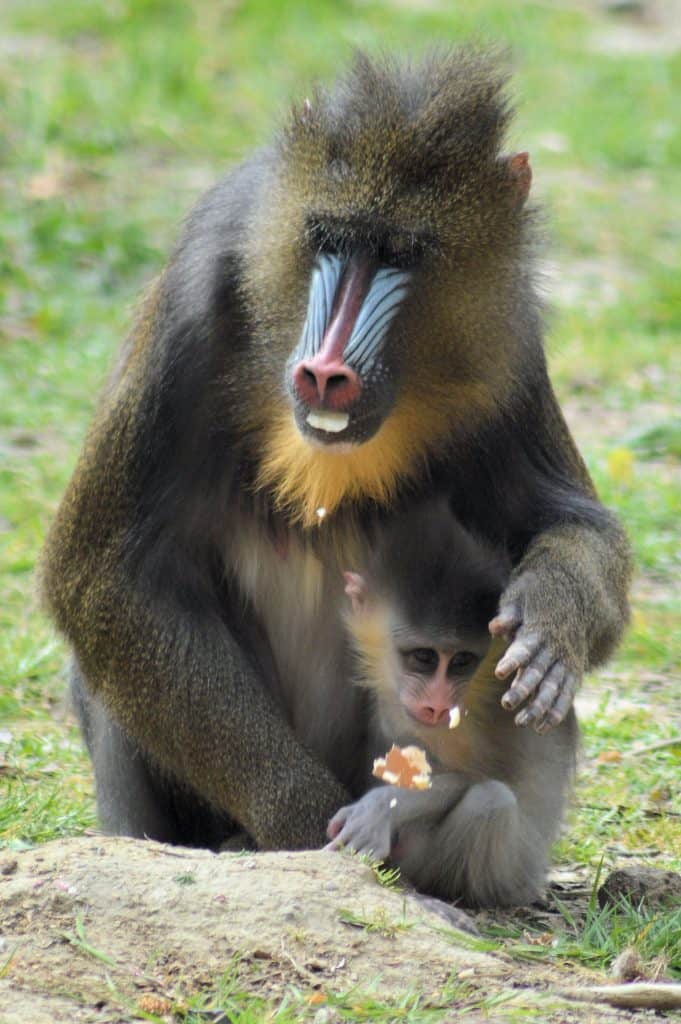Mandrills, obviously…
They are the largest and one of the most colourful monkeys in the world. But why are they so colourful?
It is the male Mandrills that can develop the bright blues, purples and reds on their faces and backsides.
These colours indicate a more dominate male within the troop. The brighter the colour, the higher ranking the animal. Females prefer a man with the brightest features. It indicates his status very clearly without having to get too close. Male Mandrills can weigh over twice as much as females, so you can understand when they may be a bit hesitant when large males approach.
The colour that you see on the male’s faces and bottom, isn’t actually the colour of their skin. If you were to push your finger on their nose (not recommended to do whilst they are awake) their skin is actually a pale pink. It is the light diffraction in collagen fibres within the skin tissue that cause the skin to look this colour.
If we take a look at this gorgeous picture by Andrew Norman, of Malik, our dominate male Mandrill, you can see just how fantastic his colours look.

Malik will be 16 years old next year and has been our dominate male for around 7 years. He may not be the sharpest knife in the block, but he is definitely the most handsome. However he wasn’t always this colourful.
Mathias is our middle ranking adult male. He is smaller than Malik and not quite as colourful as him either. Mathias does like to push the boundaries sometimes with Malik, but he’s soon put back in his place. He is also the hardest Mandrill ever to be able to get a decent photo of! I’m sure he’s camera shy.
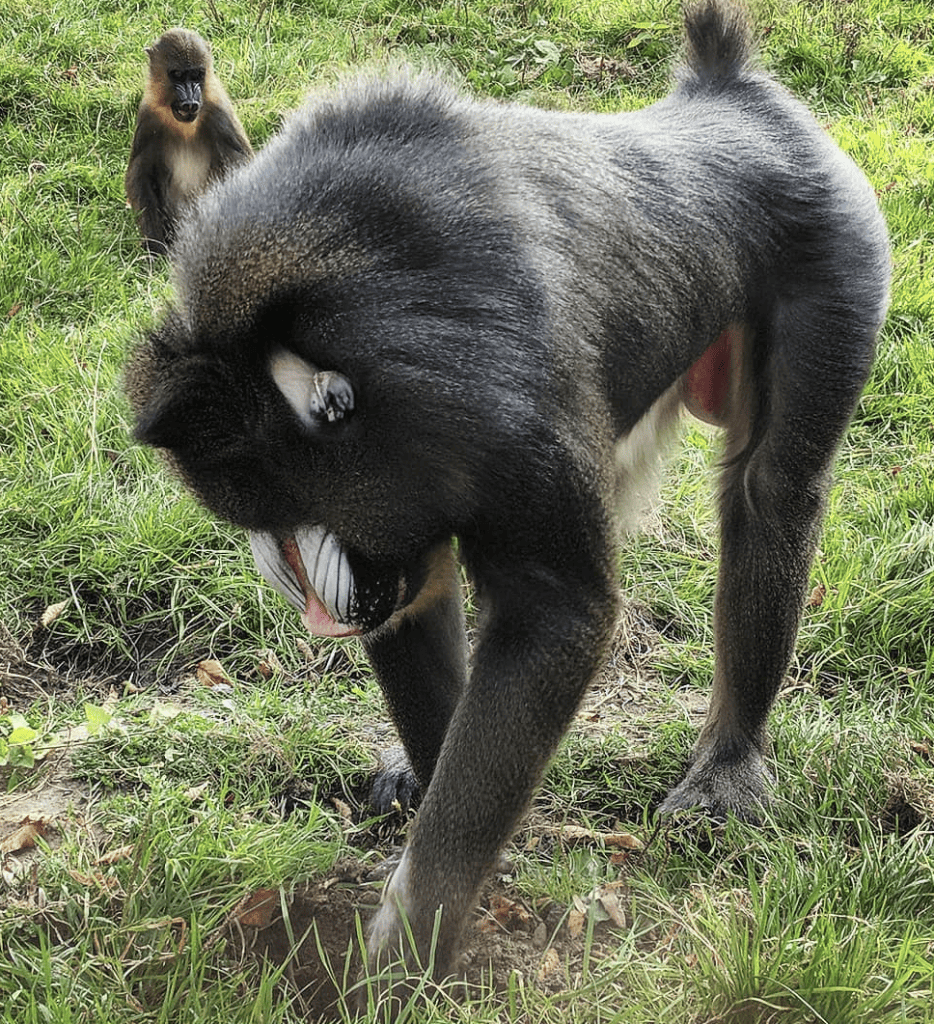
Here is a picture of our lowest ranking male, Kayin.
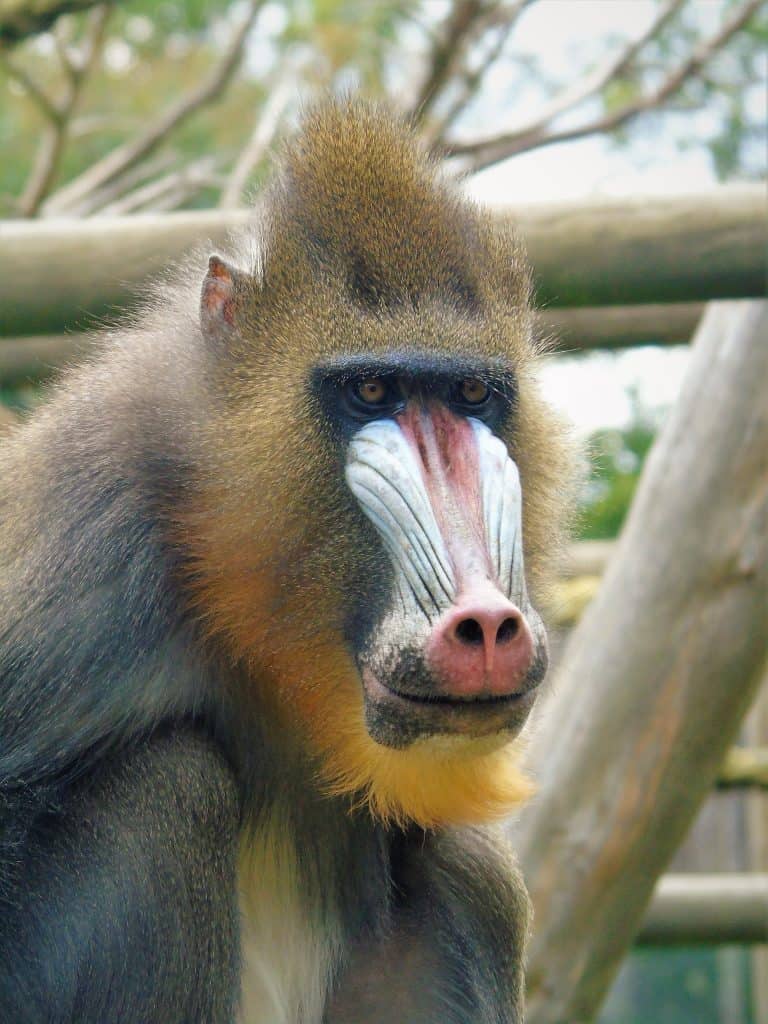
You can see he has a very slight amount of colour but nothing compared to Malik. If leading a troop of Mandrills was all about brains, not brawn, Kayin would definitely be in charge.
Now let’s take a look at what the youngsters and females look like.
Young Mandrills
Here are a series of pictures of our females and their babies. When you’re next at the park, see if you can spot who’s who!
This first picture is of a very tired looking Olive with her first born son, Rafiki back on 6th June 2016. Rafiki is just one day old in this picture and you can see that his nose is just the very pale pink without any of the brighter colours.
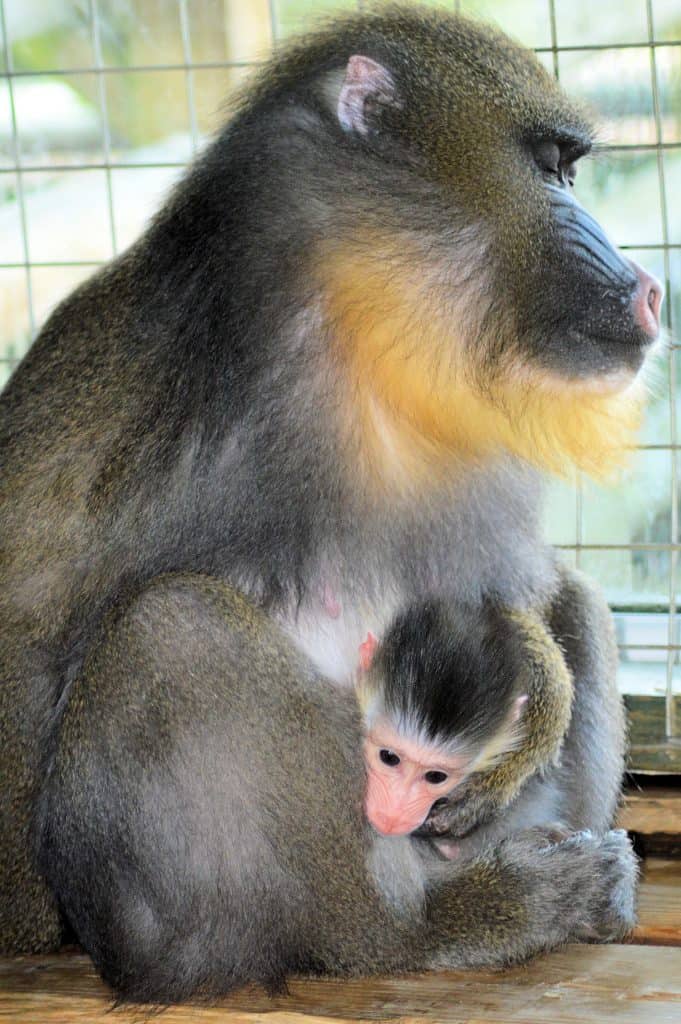
Here he is with mum, outside a few weeks later. You can already see that he is going darker around his face with the bridge of his nose still the pale pink colour.
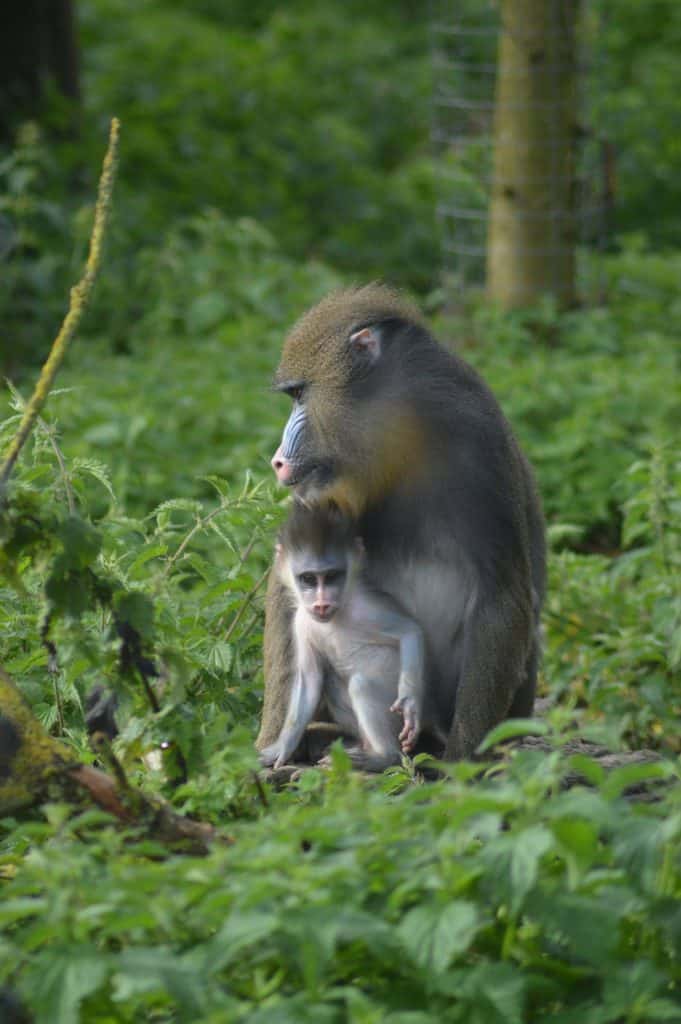
In this picture, Rafiki is around a year old. All the pinky colour has almost completely gone from his nose and you can very clearly see the ridges on his cheeks developing.
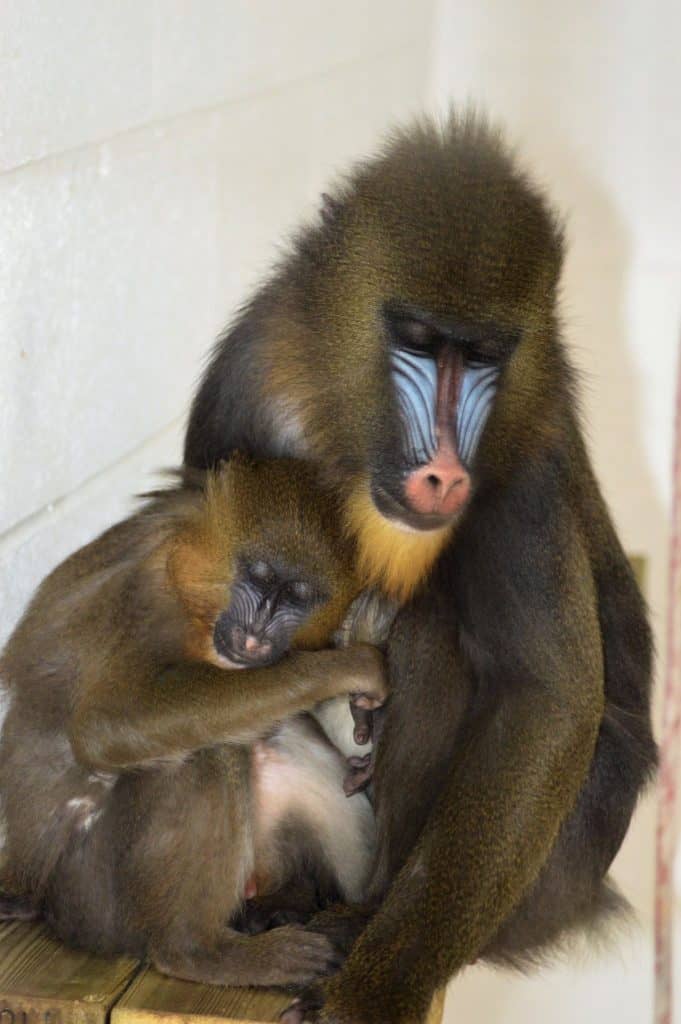
This last picture of Olive with an infant is her with Shenzi her daughter. Shenzi is around 1 year old in the picture and you can see with female and male infant there really isn’t much colouration different in them. Males will develop their bright colours as the reach sexual maturity.
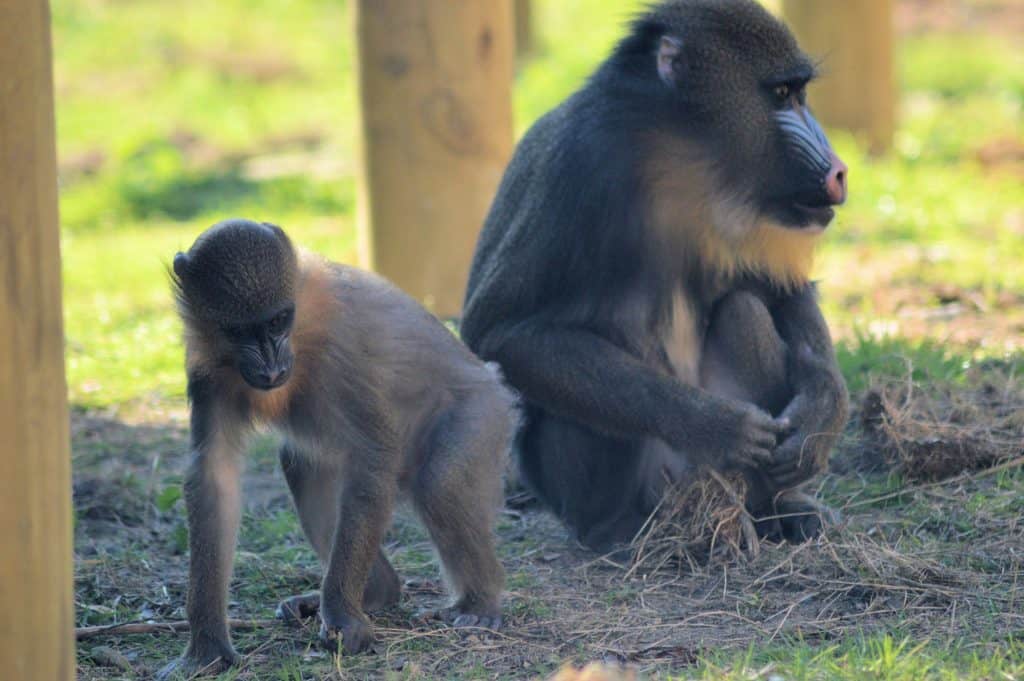
And of course I can’t leave out our other adult female, Madge with her son Zazu. Here Zazu is a few months old, but he already has the yellow fuzz around his cheeks.
